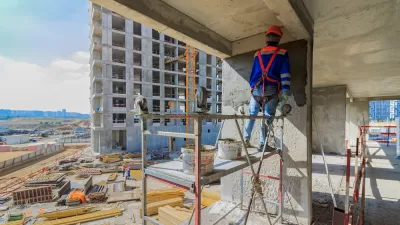Several recent studies add fuel to the fire of whether market-rate housing helps affordability or drives low-income people from their neighborhoods.

The question of whether new market rate housing hurts or helps housing affordability—central to so many urban planning debates in the contemporary United States—can be answered with several new sources of data, according to an article by Emily Badger.
The tension between these views sits at the center of battles over individual buildings and broader fights over how to alleviate the housing crisis. And until recently, there has been almost no data at the neighborhood scale to resolve it. It’s even plausible that both stories could be true at the same time — that new housing might help lower rents across a metro area even as it signals the popularity of a particular neighborhood and nudges up rents nearby.
Several new studies finally offer some evidence that is encouraging, if incomplete. Researchers at N.Y.U., the Upjohn Institute and the University of Minnesota have all looked at what happens immediately surrounding new large-scale apartments that are market-rate (no rent restrictions). Many studies already show that regions that build more are more affordable (and regions that restrict new housing are less so). These latest studies ask if that pattern holds when we zoom in to individual blocks.
Badger details each of the three studies briefly listed there, and speaks to the researchers responsible for the findings in each case for more insight. Collectively, however, these studies provide evidence to support both arguments—that new, market-rate developments can both help keep housing affordability and displace low-income residents.
FULL STORY: A Luxury Apartment Rises in a Poor Neighborhood. What Happens Next?

Alabama: Trump Terminates Settlements for Black Communities Harmed By Raw Sewage
Trump deemed the landmark civil rights agreement “illegal DEI and environmental justice policy.”

Planetizen Federal Action Tracker
A weekly monitor of how Trump’s orders and actions are impacting planners and planning in America.

The 120 Year Old Tiny Home Villages That Sheltered San Francisco’s Earthquake Refugees
More than a century ago, San Francisco mobilized to house thousands of residents displaced by the 1906 earthquake. Could their strategy offer a model for the present?

In Both Crashes and Crime, Public Transportation is Far Safer than Driving
Contrary to popular assumptions, public transportation has far lower crash and crime rates than automobile travel. For safer communities, improve and encourage transit travel.

Report: Zoning Reforms Should Complement Nashville’s Ambitious Transit Plan
Without reform, restrictive zoning codes will limit the impact of the city’s planned transit expansion and could exclude some of the residents who depend on transit the most.

Judge Orders Release of Frozen IRA, IIJA Funding
The decision is a victory for environmental groups who charged that freezing funds for critical infrastructure and disaster response programs caused “real and irreparable harm” to communities.
Urban Design for Planners 1: Software Tools
This six-course series explores essential urban design concepts using open source software and equips planners with the tools they need to participate fully in the urban design process.
Planning for Universal Design
Learn the tools for implementing Universal Design in planning regulations.
Clanton & Associates, Inc.
Jessamine County Fiscal Court
Institute for Housing and Urban Development Studies (IHS)
City of Grandview
Harvard GSD Executive Education
Toledo-Lucas County Plan Commissions
Salt Lake City
NYU Wagner Graduate School of Public Service





























